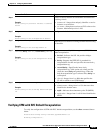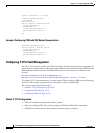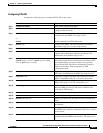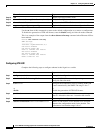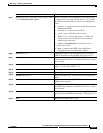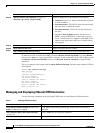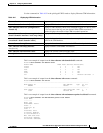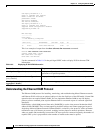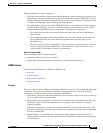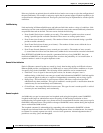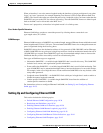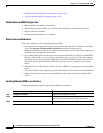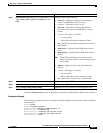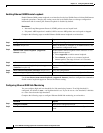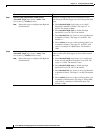
10-33
Cisco ASR 901 Series Aggregation Services Router Software Configuration Guide
OL-23826-09
Chapter 10 Configuring Ethernet OAM
Ethernet OAM has two major components:
• The OAM client establishes and manages Ethernet OAM on a link and enables and configures the
OAM sublayer. During the OAM discovery phase, the OAM client monitors OAM PDUs received
from the remote peer and enables OAM functionality. After the discovery phase, it manages the rules
of response to OAM PDUs and the OAM remote loopback mode.
• The OAM sublayer presents two standard IEEE 802.3 MAC service interfaces facing the superior
and inferior MAC sublayers. It provides a dedicated interface for the OAM client to pass OAM
control information and PDUs to and from the client. It includes these components:
–
The control block provides the interface between the OAM client and other OAM sublayer
internal blocks.
–
The multiplexer manages frames from the MAC client, the control block, and the parser and
passes OAM PDUs from the control block and loopback frames from the parser to the
subordinate layer.
–
The parser classifies frames as OAM PDUs, MAC client frames, or loopback frames and sends
them to the appropriate entity: OAM PDUs to the control block, MAC client frames to the
superior sublayer, and loopback frames to the multiplexer.
Benefits of Ethernet OAM
Ethernet OAM provides the following benefits:
• Competitive advantage for service providers
• Standardized mechanism to monitor the health of a link and perform diagnostics
OAM Features
The following OAM features are defined by IEEE 802.3ah:
• Discovery
• Link Monitoring
• Remote Failure Indication
• Remote Loopback
Discovery
Discovery is the first phase of Ethernet OAM and it identifies the devices in the network and their OAM
capabilities. Discovery uses information OAM PDUs. During the discovery phase, the following
information is advertised within periodic information OAM PDUs:
• OAM mode—Conveyed to the remote OAM entity. The mode can be either active or passive and can
be used to determine device functionality.
• OAM configuration (capabilities)—Advertises the capabilities of the local OAM entity. With this
information a peer can determine what functions are supported and accessible; for example,
loopback capability.
• OAM PDU configuration—Includes the maximum OAM PDU size for receipt and delivery. This
information along with the rate limiting of 10 frames per second can be used to limit the bandwidth
allocated to OAM traffic.
• Platform identity—A combination of an organization unique identifier (OUI) and 32-bits of
vendor-specific information. OUI allocation, controlled by the IEEE, is typically the first three bytes
of a MAC address.



